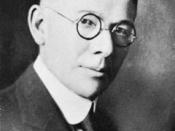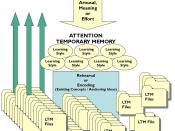Describe the main approaches that have been employed to understand the notion of intelligence, and access whether these approaches can be considered as complementary or mutually exclusive.
Intelligence is the intellectual capacity of learning and using of skills that are required for the successful adaptation to the demand of individual's culture and environment. It is a complex construct that consists of verbal ability, practical problem solving, social competence and so on. The psychometric and cognitive approaches, though both concerned with information processing are two entirely different perspectives that attempt to understand the notion of intelligence. This essay aims to examine these approaches and to see whether their explanations for intelligence are complementary or mutually exclusive, The starting point will be going through the main elements & emphasis; instances & propositions of these approaches, in turn, before evaluating whether they can account for intelligence in a mutually exclusive way or can be integrated so as to give a fuller account of intelligence?Inspired by Plato's ideas of the individual's innate intellectual strength, the psychometric approach tends to obtain a scientific measure of intelligence.
As a result, it became a product-oriented approach. It stresses on the outcomes and results, that is, how many and what kinds of questions children can answer correctly at different ages, whilst the processes in which children arrive at the solutions to problems is much less emphasized. A wide variety of intelligence tests, such as the Stanford-Binet test and the various Wechsler Intelligence Scales were developed on this basis.
The work of Galton and his associates signaled the beginning of intelligence-testing movement. They believed there is a correlation of intelligence and social status, and tested individuals by assessing individual's performance on simple sensory and motor experiments such as dynamotor pressure; sensation-areas; pressure causing pain; least noticeable difference; reaction-time for...


